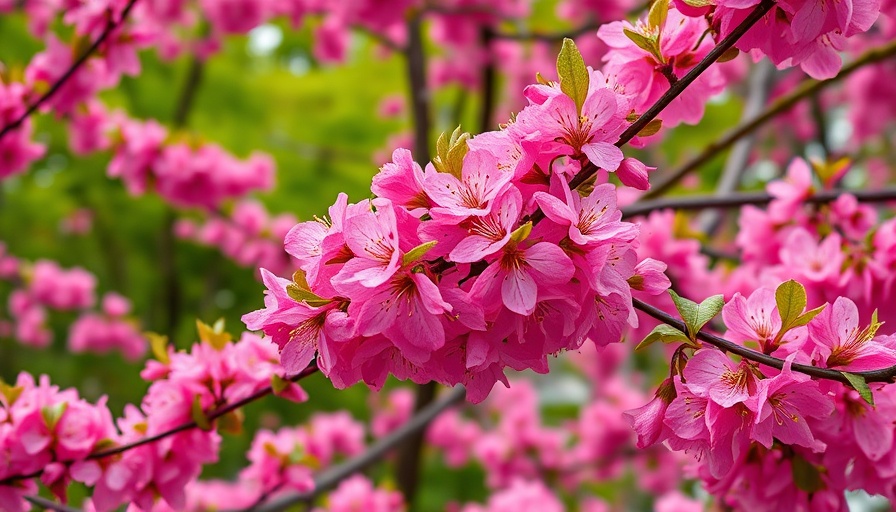
The Radiance of Redbud Trees: A Spring Marvel
As the warmth of spring blankets the landscape, one of the most stunning heralds of the season, the redbud tree, bursts forth in a dazzling display. Known scientifically as Cercis spp., these trees are characterized by vibrant pink to purple blossoms that cover their branches, creating breathtaking views in any garden. Their early bloom, which can last several weeks, is not only visually appealing but also serves as a beacon of hope and renewal for many gardeners and nature lovers.
Growing Conditions: What You Need to Know
First things first: the redbud tree is well-suited for a variety of growing conditions. Thriving from USDA Zones 4 to 9, it can withstand a range of climates, which makes it a favorite across many homes. The trees prefer part shade to full sun and need well-draining soil with a pH between 6.5 and 8.0. Gardeners looking to introduce this charismatic species into their backyards should ensure they provide adequate space, as the trees can grow up to 30 feet tall depending on the variety you choose.
Creating a Picture-Perfect Garden with Redbuds
Redbuds are not just delightful on their own, but they can serve as striking focal points in a broader landscaping design. Pairing them with other blossoming plants can enhance the beauty of a garden. For instance, you might consider companion planting with daffodils or tulips that bloom concurrently, creating a colorful ensemble that beckons the eye. Designing a flower garden around these trees can yield depths of visual interest and a palette that evolves through the seasons.
Essential Care Tips for Your Redbud Tree
Caring for redbud trees is relatively straightforward. They are low-maintenance; however, a few foundational care practices can ensure they flourish. Regular watering is critical—especially during the tree’s first few years while it establishes its roots. When planting, include organic mulch around the base to retain soil moisture and enrich soil quality. As for pruning, this species requires minimal intervention, mainly to trim dead or crossing branches to promote healthy growth.
Common Pests and Diseases: Keeping Your Garden Healthy
No garden is without its troubles! Redbud trees can face threats from pests like the redbud borer and aphids. Maintaining a close watch on your tree’s health helps in early detection and treatment, often with organic solutions such as neem oil to keep your plantings healthy and thriving. Keeping the surrounding area clean of debris can also minimize pest attraction.
Propagation: Share the Beauty
If you've fallen in love with your redbud, you might want to consider propagation! You can clone your tree through seeds or cuttings. The seeds can be collected and planted in the early spring, while cuttings taken in late summer can root nicely when placed in moist soil. This provides an excellent opportunity for gardeners to share their beloved trees or expand their own garden spaces.
Future Trends: Why Redbuds Are Here to Stay
In the landscape design world, trends are leaning more towards native planting and sustainability, positioning redbud trees as a perfect choice to meet these evolving demands. Their lower maintenance requirements and habitat-friendly nature make them ideal for contemporary gardeners who prioritize ecological responsibility alongside aesthetics.
Conclusion: Embrace the Redbud in Your Garden
In summary, the redbud tree is not just a visual delight but also a practical and sustainable choice for gardens and landscape designs. Its flowers provide vital resources for pollinators, making it a splendid addition to any green space. By understanding the necessities for growth, care, and propagation, you can enjoy the stunning beauty of redbuds and contribute positively to your local ecosystem.
Ready to plant your own redbud tree? Start by mapping out your garden design and researching local vendors for healthy saplings. Embrace the joy of nurturing this beautiful tree in your garden. You won't regret it!
 Add Row
Add Row  Add
Add 




Write A Comment